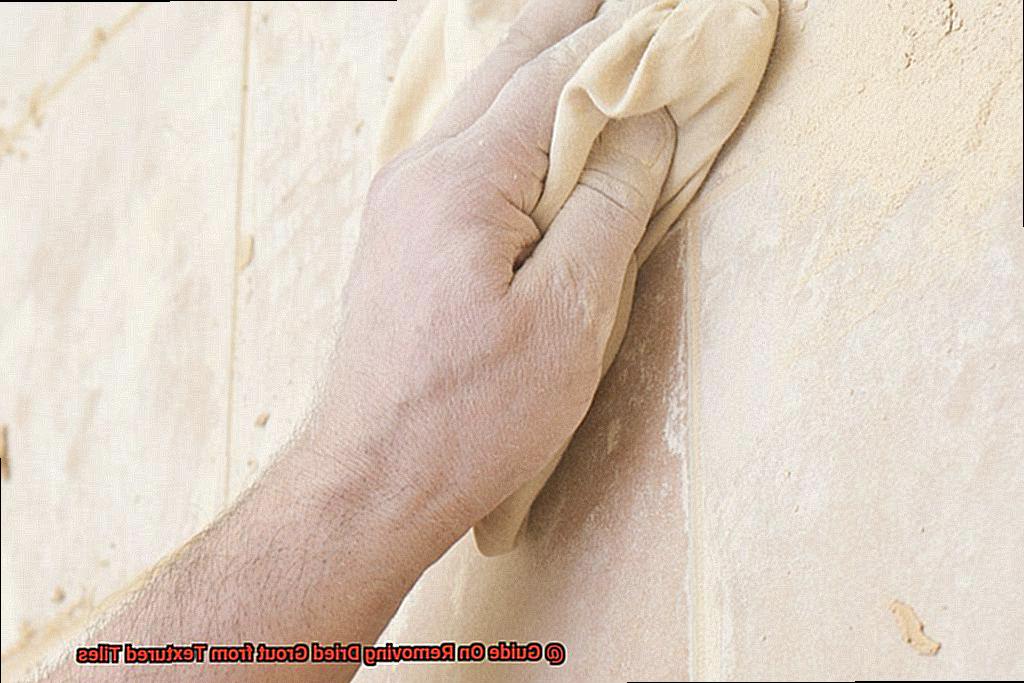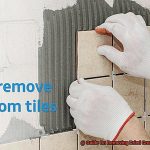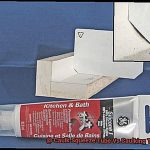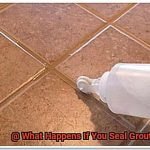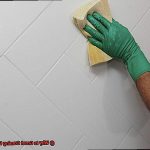Are you tired of struggling to remove dried grout from your textured tiles, only to end up with scratches and frustration?
Well, you’re not alone. Grout buildup on textured tiles can be a tough challenge for many homeowners.
But don’t worry, we’ve got you covered with our comprehensive guide on removing dried grout from textured tiles. Our guide is packed with tips and tricks that will not only save you time and effort but also money.
From the equipment and materials required to the step-by-step process of removing dried grout without damaging your tiles, we’ve got it all covered. We’ll also highlight common mistakes to avoid and provide some handy tips that will make the job easier.
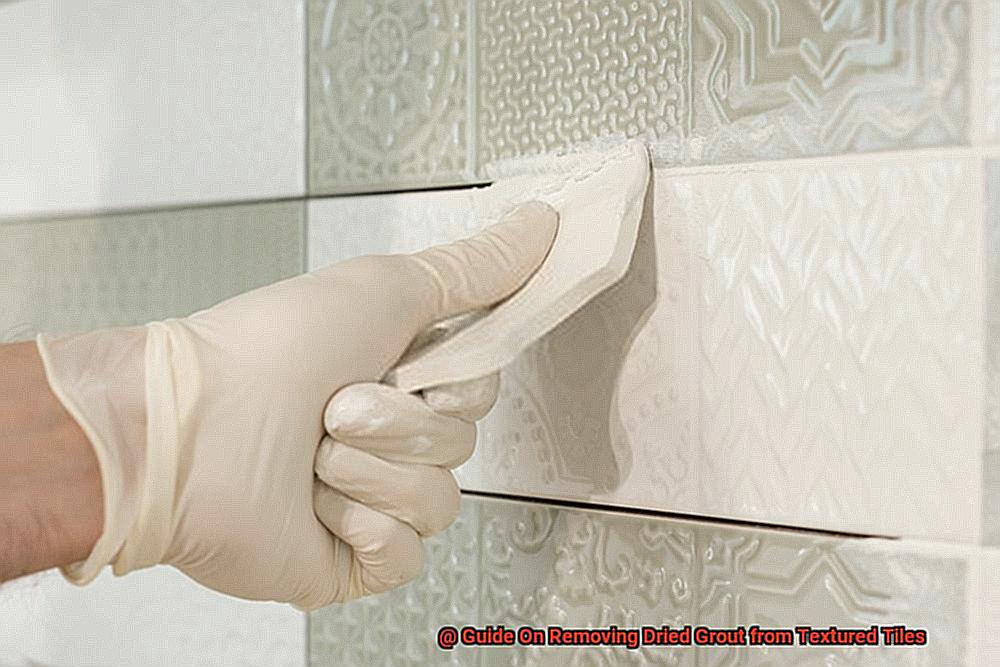
So if you’re ready to tackle that stubborn grout buildup on your textured tiles, let’s dive in together.
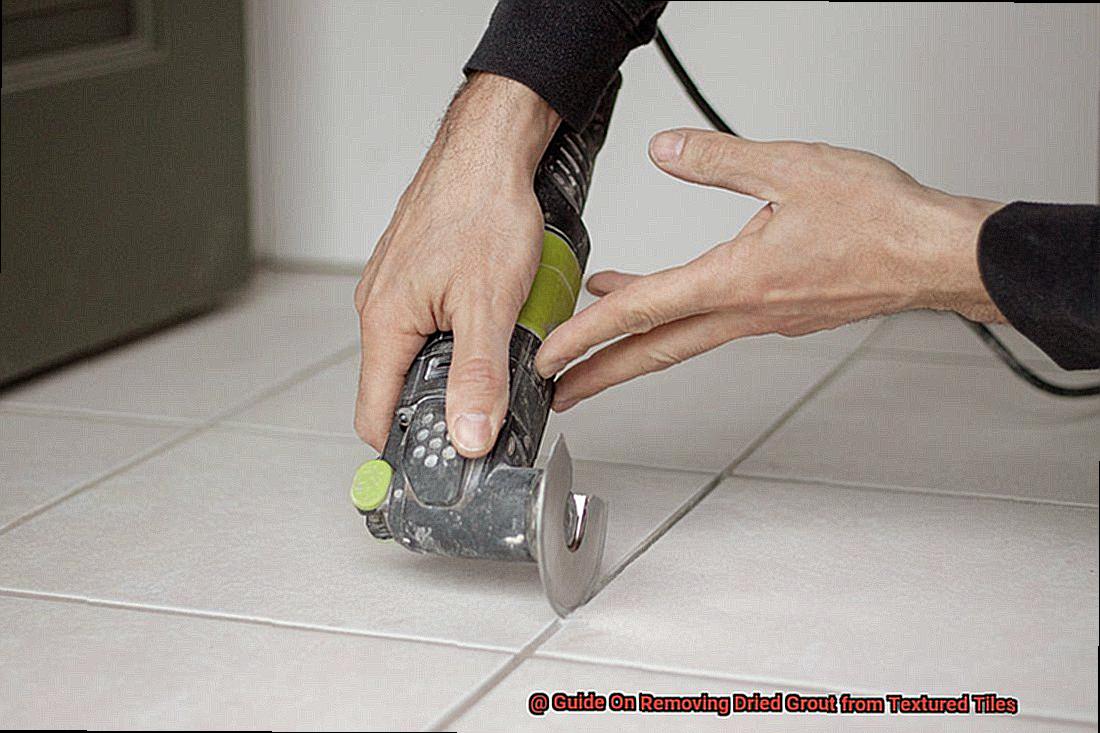
Contents
Assessing the Severity of the Situation
When it comes to removing dried grout from textured tiles, assessing the severity of the situation is crucial.
Before you begin, take a close look at your tiles and evaluate the extent of the damage caused by the dried grout. This will help you determine the best approach to take.
First, consider the type of tiles that have been affected. Textured tiles can be particularly challenging to clean due to their uneven surfaces that trap dirt and grime.
Porosity levels also vary among different tile types, which can affect how well they can withstand abrasive cleaning techniques.
Next, assess the amount of dried grout on the tiles.
Smaller amounts may be easily removed with a simple solution, while larger amounts may require more intensive methods like scraping or grinding. Before beginning any cleaning process, it is vital to evaluate any existing damage to the tiles.
Cracks or chips in the tile surface can make them more vulnerable to further damage during cleaning. Make sure to address these issues first to prevent further damage.
If warm water and detergent are not effective, try using a solution of equal parts white vinegar and warm water instead. Spray this generously onto the affected area and let it sit for at least 15 minutes before scrubbing with a stiff-bristled brush.
Be sure to rinse the tiles thoroughly after scrubbing to avoid leaving any residue behind. If all else fails, you can try using a commercial grout remover, but these products contain harsh chemicals that require careful handling.
Follow the manufacturer’s instructions carefully and wear protective gloves and eyewear during use. As a last resort, specialized tools like a rotary tool with a carbide blade or a grout saw can be used to grind away hardened grout.
However, if you’re not confident in your abilities, it’s best to hire a professional. In conclusion, removing dried grout from textured tiles requires patience and careful assessment of the situation.
Removing Dried Grout with a Vinegar Solution
There is a solution that’s both effective and eco-friendly – a vinegar solution.
Using vinegar is a great way to get rid of that pesky dried grout. So why does vinegar work so well?
It’s simple – vinegar contains acetic acid, a natural cleaning agent that dissolves the minerals in the grout, making it easier to remove. Plus, unlike some harsh chemicals, vinegar won’t harm your home or the environment.
First, mix equal parts of white vinegar and water in a spray bottle.
Spray the solution directly onto the dried grout and let it sit for about 15 minutes. This gives the vinegar time to penetrate and break down the grout.
After 15 minutes, grab a stiff-bristled brush or an old toothbrush and start scrubbing the affected area.
Apply pressure while scrubbing to loosen up the grout.
Once you’ve thoroughly scrubbed the area, rinse it with clean water to remove any remaining residue. If you still see traces of dried grout on your tiles, don’t fret.
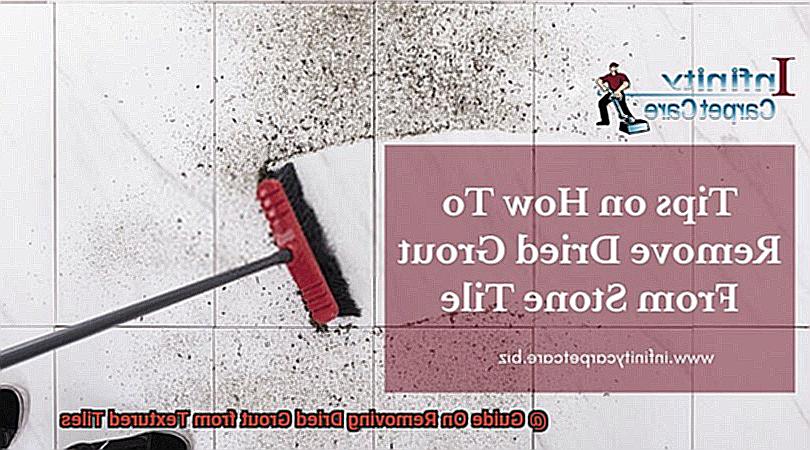
Simply repeat the process until all of the grout has been removed. Remember to test the vinegar solution on a small, inconspicuous area first to ensure that it won’t damage your tiles.
It’s worth noting that vinegar can be acidic and may damage certain types of tiles.
So if you’re unsure, it’s always best to test it out first.
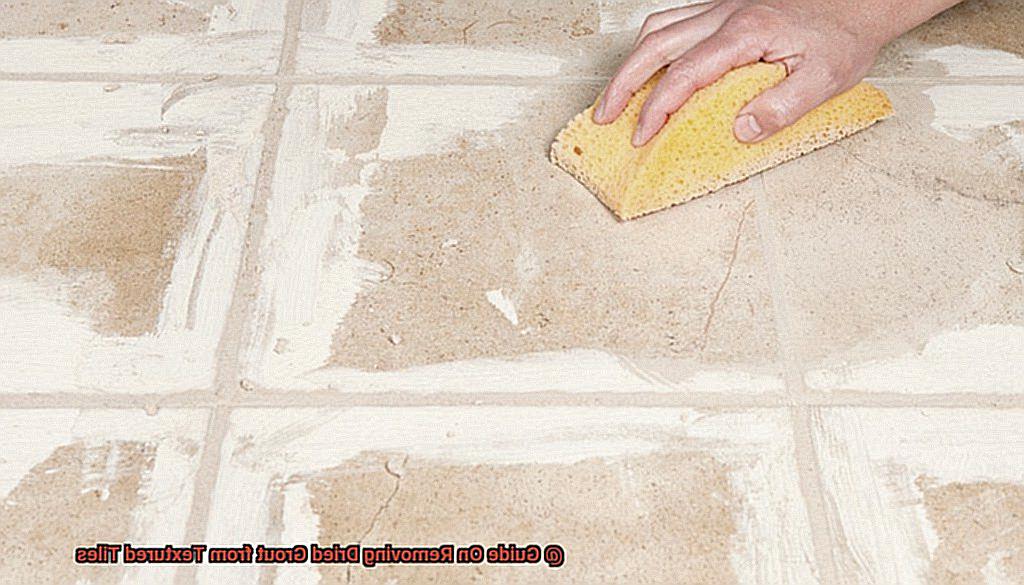
And as with any cleaning solution, it’s important to wear gloves and protective eyewear while handling it. In conclusion, removing dried grout from textured tiles may seem like a daunting task, but using a vinegar solution can make it much easier.
Not only is vinegar an effective cleaner, but it’s also a safe and eco-friendly option.
Using a Commercial Grout Remover
First, when selecting a commercial grout remover, it’s crucial to consider the type of tiles you have. Just like how each superhero has their unique powers, not all grout removers are suitable for all materials.
Some products may cause damage to certain tiles, so be sure to check the label before making a purchase.
Additionally, make sure to select a product that is specifically designed for textured surfaces since these can be more challenging to clean than smooth tiles.
Once you’ve got the right product in hand, it’s time to get technical and follow the instructions carefully. Typically, you’ll need to apply the product to the affected area and let it sit for a specific amount of time before scrubbing with a brush or sponge.
Be prepared to repeat this process multiple times if necessary. But before you dive into scrubbing like a superhero, make sure you protect yourself by wearing gloves and eye goggles.
Commercial grout removers can contain harsh chemicals that can cause skin or eye irritation, so it’s better to be safe than sorry. Also, keep the room well-ventilated during and after application to avoid inhaling any fumes.
So, using a commercial grout remover can be a game-changer when it comes to removing stubborn grout buildup from textured tiles. Just remember to choose the right product for your tiles and follow the instructions carefully while protecting yourself from any potential harm.
Specialized Tools for Removing Dried Grout
Removing dried grout from textured tiles can be a daunting task, but fear not.
While some tools may seem familiar to those who have tackled this task before, there are also specialized tools that can help make the process more efficient and effective.
First up, we have the trusty grout saw. This small handheld saw with a carbide blade is designed specifically for cutting through grout.
It’s particularly helpful when working with textured tiles because it allows you to get into the narrow spaces between tiles and remove grout without damaging the surrounding tile surfaces. Think of it as a mini superhero with a precise power to remove grout buildup.
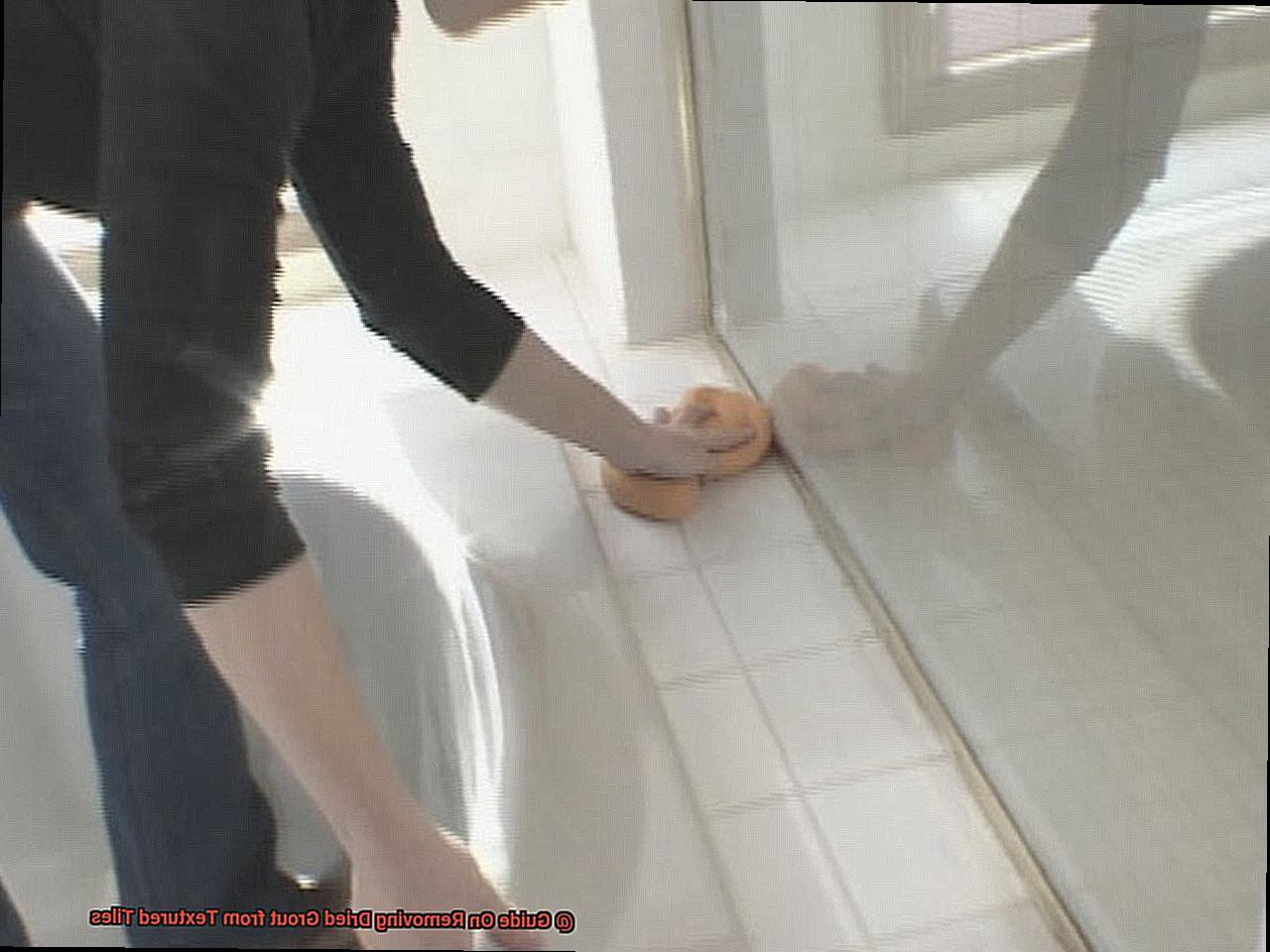
Next, we have the rotary tool with a grout removal attachment. This tool is similar to a Dremel tool and can be equipped with a variety of attachments, including ones specifically designed for removing grout.
The advantage of using a rotary tool for this task is that it allows you to work quickly and accurately, even in tight spaces. It’s like having a superhero sidekick that can adapt to various situations with different attachments.
For larger areas of dried grout, a power grinder with a diamond blade can be an effective tool. However, exercise caution when using a power grinder on textured tiles as they can quickly damage the surface of the tile if not used correctly.
Think of this tool as a powerful superhero that should only be used when necessary and with great care. Finally, there are specialized chemical solutions that can be used to dissolve dried grout from textured tiles.
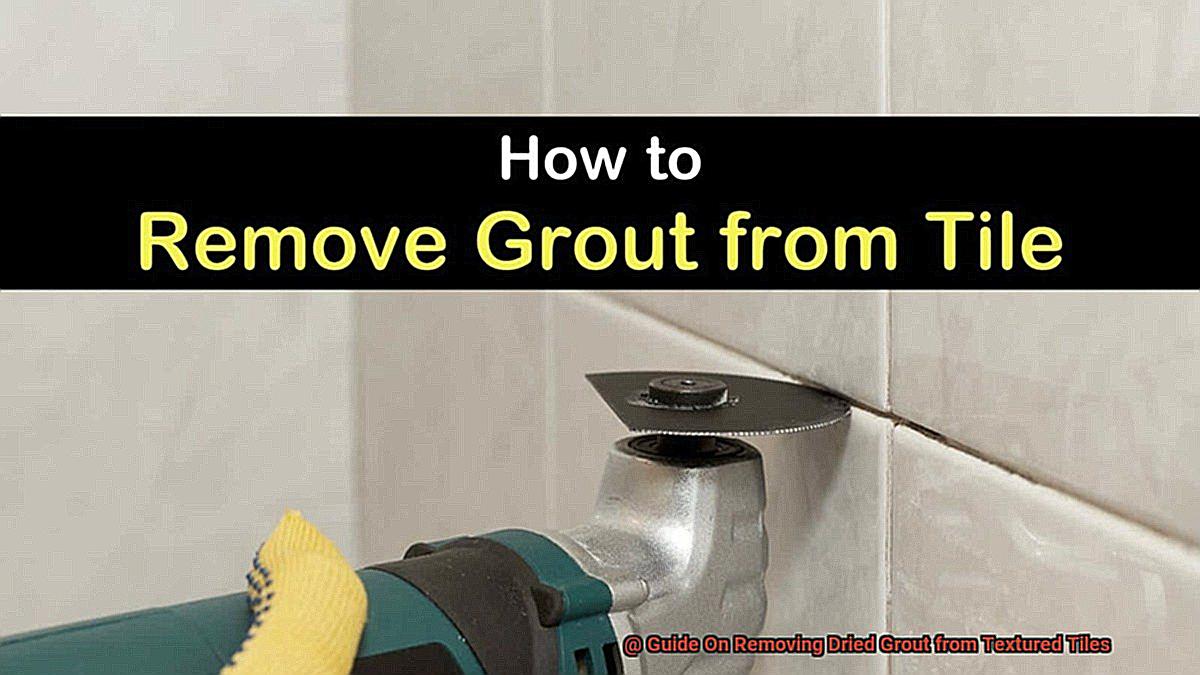
However, these solutions should be used carefully as they contain strong acids that break down the grout and can damage surrounding surfaces if not used correctly.
Think of this solution as a superhero with great power but should only be used by those who know how to control it.
Taking Precautions when Using Chemicals and Tools
As we embark on the journey to remove that pesky dried grout from our textured tiles, let’s take a moment to discuss the importance of taking precautions when using chemicals and tools.
Just like any great warrior, we need to protect ourselves and our tiles from harm. Firstly, it’s important to note that some chemicals can be harsh and abrasive, causing damage to the tiles or even harm to the person using them.
To avoid any mishaps, always follow safety guidelines and use protective gear when handling these chemicals. Think of it as your superhero suit, protecting you from harmful fumes and chemicals.
Acid-based cleaners and solvents are commonly used for removing grout.
While they can be effective in breaking down the grout, they can also cause fumes that are harmful if inhaled. To ensure your safety, make sure you work in a well-ventilated area and wear a mask to protect your lungs.
Tools such as scrapers and brushes can also cause damage to textured tiles if not used properly. It’s important to choose the right tool for the job and use it with care.
For instance, a metal scraper may be too abrasive for some types of tile, while a soft-bristled brush may not be effective enough. Think of it as your superhero weapon, using it with precision to achieve great results without causing any damage.
Remember to always follow safety guidelines, use protective gear, choose the right tool for the job, and work with care.
x2WneTU4HDQ” >
Conclusion
In summary, removing dried grout from textured tiles may seem overwhelming, but it’s not impossible.
By using the right tools and techniques, you can get the job done effectively and efficiently. Before starting, assess the severity of the situation and choose the appropriate method for your tiles.
The eco-friendly vinegar solution is a great option as it dissolves minerals in the grout without damaging your tiles. Commercial grout removers are also effective but require careful handling due to their harsh chemicals.
Remember to take precautions when handling chemicals and tools by wearing protective gear, working in well-ventilated areas, choosing the right tool for the job, and using them with care.

